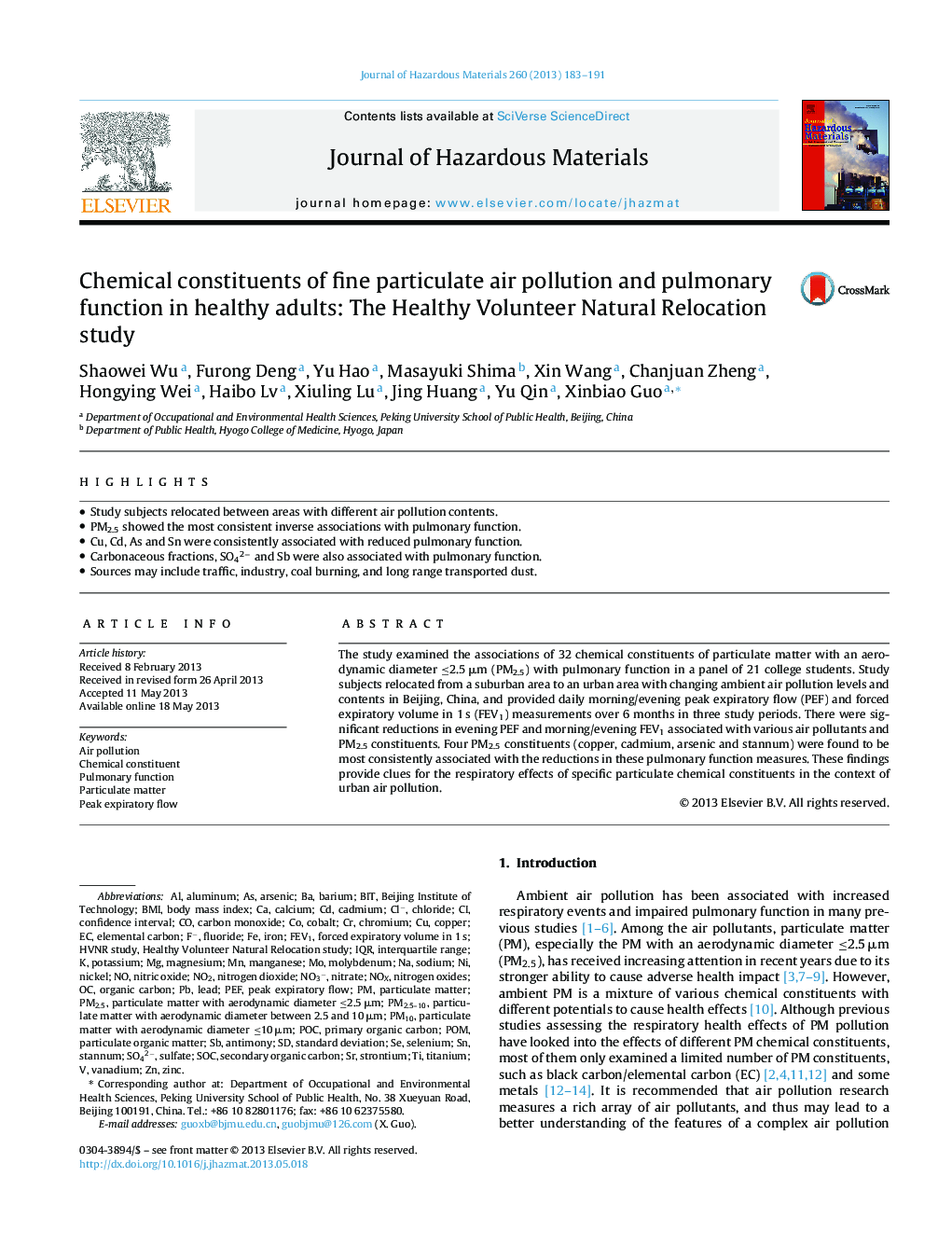| Article ID | Journal | Published Year | Pages | File Type |
|---|---|---|---|---|
| 6972292 | Journal of Hazardous Materials | 2013 | 9 Pages |
Abstract
The study examined the associations of 32 chemical constituents of particulate matter with an aerodynamic diameter â¤2.5 μm (PM2.5) with pulmonary function in a panel of 21 college students. Study subjects relocated from a suburban area to an urban area with changing ambient air pollution levels and contents in Beijing, China, and provided daily morning/evening peak expiratory flow (PEF) and forced expiratory volume in 1 s (FEV1) measurements over 6 months in three study periods. There were significant reductions in evening PEF and morning/evening FEV1 associated with various air pollutants and PM2.5 constituents. Four PM2.5 constituents (copper, cadmium, arsenic and stannum) were found to be most consistently associated with the reductions in these pulmonary function measures. These findings provide clues for the respiratory effects of specific particulate chemical constituents in the context of urban air pollution.
Keywords
POMFEV1PM10POCPEFparticulate matter with aerodynamic diameter ≤2.5 μmPM2.5IQRCl−F−NO3−NOxPM2.5–10SO42−ArsenicAir pollutionAluminumantimonyIronStrontiumstandard deviationNitrogen oxidesBariumBITChemical constituentTitaniumPeak expiratory flowForced expiratory volume in 1 sparticulate matterSodiumLeadSeleniumSulfateSOCbody mass indexBMIPulmonary functionconfidence intervalZincFluorideParticulate organic matterinterquartile rangeCoppercarbon monoxideManganeseMagnesiumMolybdenumNitrateNitrogen dioxideNO2Nitric oxideNickelVanadiumPotassiumCadmiumCobaltOrganic carbonSecondary organic carbonelemental carbonChromiumChlorideCalcium
Related Topics
Physical Sciences and Engineering
Chemical Engineering
Chemical Health and Safety
Authors
Shaowei Wu, Furong Deng, Yu Hao, Masayuki Shima, Xin Wang, Chanjuan Zheng, Hongying Wei, Haibo Lv, Xiuling Lu, Jing Huang, Yu Qin, Xinbiao Guo,
